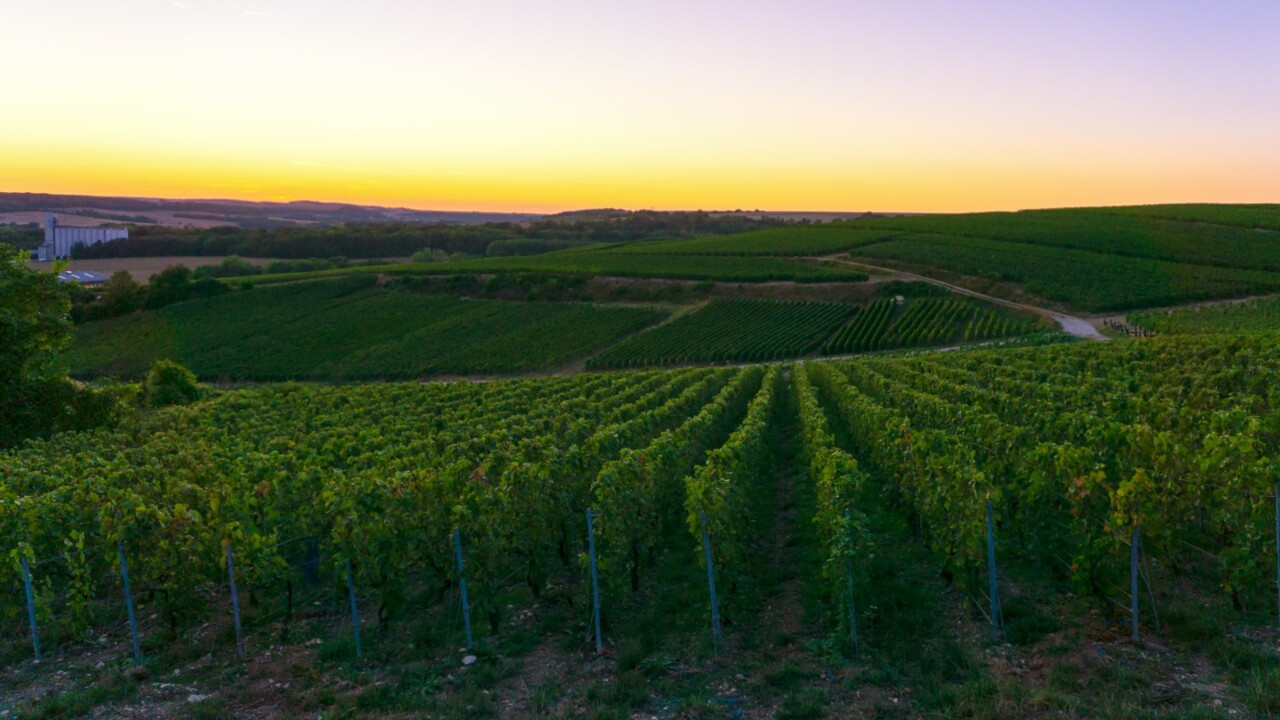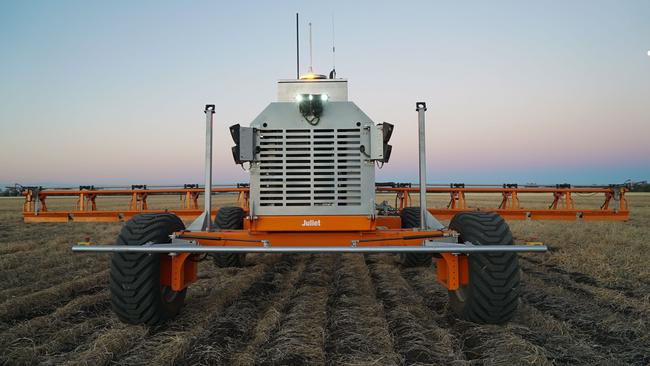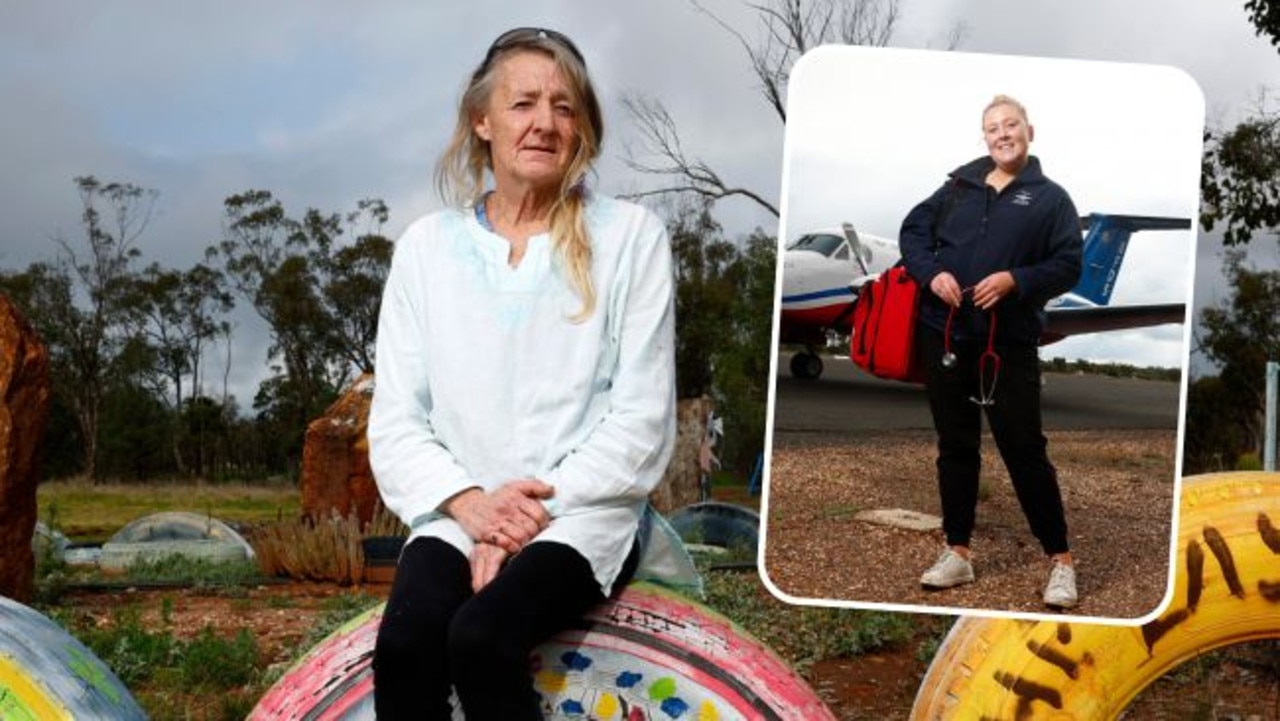Robot farmers drive bid to cut emissions
Australian farmers should not have to slash their livestock numbers to reduce emissions, but Labor is confident cutting-edge science will ensure the industry can actually grow even as pollution is brought down.

Bush Summit
Don't miss out on the headlines from Bush Summit. Followed categories will be added to My News.
Australian farmers should not have to slash their livestock numbers to reduce emissions, but Labor is confident cutting-edge science will ensure the industry can actually grow even as pollution is brought down.
Agriculture, Fisheries and Forestry Minister Murray Watt said Australia was “very fortunate” to have rural research and development corporations that funnel about $300 million in combined government and industry funding annually toward projects ranging from developing higher yield and more resilient crops, to methods for reducing carbon emissions in farming.
Mr Watt pointed to the government’s $8.1 million investment to further the use of asparagopsis as a feed supplement that reduces methane produced by livestock as a potentially game-changing innovation.
“Some of the early trials have showed massive reductions in methane emissions,” he said.
“If we can be doing that kind of thing, that will mean that we can continue growing agricultural production while reducing emissions at the same time.
“We don’t want to get into a situation where we have to reduce livestock numbers in order to reduce emissions.”

His comments come ahead of a major summit to improve economies and livelihoods in the bush.
The News Corp 2023 Bush Summit will launch as a national event in Tamworth, NSW, on August 11, before travelling to Perth in Western Australia, Port Lincoln in South Australia, Hobart in Tasmania; Wodonga in Victoria, and Rockhampton in Queensland the following week.
Mr Watt said technology was also revolutionising the face of farming in Australia, with robotics and other developments drawing in a new generation of prospective farmers.
“The image of a farmer is still a crusty old bloke in a hat, but in fact it’s becoming a far more technological industry,” he said.
“I think that’s a real drawcard for young people wanting to explore a career in technology.
“Two of the things agriculture has got going for it are high technology and a real connection to sustainability, which are two things that lots of young people are interested in.”
Mr Watt said there were significant gains being made in Australia through new “precision” methods of farming, such as using robotics and computer programming to ensure fertiliser or pesticide use is limited to exactly where needed, rather than costly widespread spraying.
“They can project exactly where the bit of fertiliser of pesticide needs to go … it is really pinpoint sort of stuff,” he said.
“That can reduce the use of fertiliser and other products which is good for the environment, but also good for farmers’ bottom line.”
Fertiliser is one of many products that has dramatically increased in price since the outbreak of the war in Ukraine.
Mr Watt said robotics were also proving useful for farmers managing tight workforce markets.
“There’s massive labour shortages in agriculture, just as there is in every industry … and technology can reduce the need for low skilled labour.”

The benefit of technology and research is not limited to productivity gains however, with Mr Watt saying advances in biosecurity are key to the future of agriculture in Australia.
“Indonesia has declared (foot and mouth disease) as endemic now, so it’s going to be there for a while.
“There’s 70 other countries around the world in the same boat, so maintaining strong biosecurity protections and funding research into biosecurity is really important for us going forward as well.”
SwamFarm Robotics co-founder Andrew Bate said his fleet of farming robots are the perfect example of technology that can make farms more efficient and sustainable.
“Our robots are fully autonomous and driverless. They work together in swarms or fleets to get the job done,” he said.

“Our robots have all different types of technology (including) technology which recognises particular weeds. In tradition farming we would spray the whole field with pesticide but with the robots … we use less than one per cent of what we would normally used,” he said.
Besides fewer chemicals in the environment, the robots are also more fuel efficient.
“They are so light and nimble, they don’t damage the soil … like a usual machine would. It also gives us fuel efficiency because they are so light.”
Originally published as Robot farmers drive bid to cut emissions




